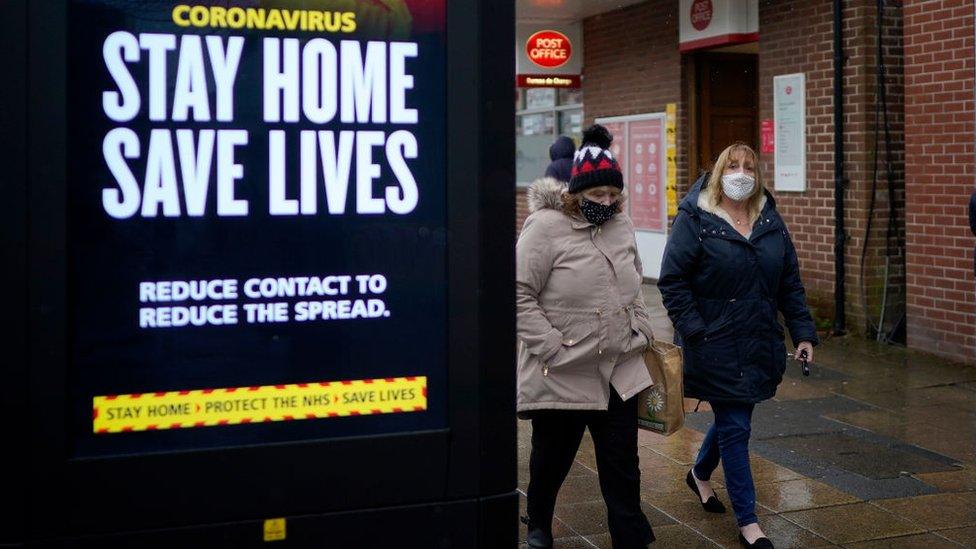Coronavirus infections levelling off in some of UK
- Published
- comments

Coronavirus infections may be levelling off in some of the UK, according to data from the Office for National Statistics, external.
The figures for the week up to 6 March suggest new cases continue to fall in England and Wales, but not in Northern Ireland and Scotland.
The UK's latest R number, external - 0.6 and 0.8 - suggests the outbreak is shrinking.
It means that, on average, every 10 people infected in the UK will infect between 6 and 8 other people.
Meanwhile, the UK has reported 6,609 cases of coronavirus and 175 Covid deaths in the latest 24-hour period, external. More than 23 million people have had a first dose of coronavirus vaccine.
Infections in the community
According to the ONS statistics, there are around 231,400 people in the community with the virus, or around one in every 280 people in the UK is infected.
That's an improvement on last week's figure of one in every 230.
It is too soon to predict, from these statistics, what effect the reopening of schools might have on infection rates going forward, say experts.
The ONS results, based on tests from people whether or not they had symptoms, show:
In England, one in 270 had coronavirus (compared with one in 220 the week before)
In Northern Ireland, it is one in 310 (compared with one in 325 previously)
In Wales, it is one in 365 (compared with one in 285)
In Scotland, it is one in 320 (compared with one in 335)
There are "early signs" of a possible increase in the percentage of people testing positive in the South East and South West of England, says the ONS.
Rates have decreased in the North East, North West, East Midlands, East of England and London, and the trend is uncertain in Yorkshire and The Humber and the West Midlands.
But caution should be taken in over-interpreting the small changes, it says.
The estimates for people testing positive for the virus are:
one in 320 for London (compared with one in 195 the week before)
one in 315 for East of England (compared with one in 260 previously)
one in 305 for East Midlands (compared with one in 185)
one in 295 for north-west England (compared with one in 190)
one in 290 for south-west England (compared with one in 365)
one in 280 for north-east England (compared with one in 150)
one in 265 for south-east England (compared with one in 340)
one in 230 for Yorkshire and The Humber (compared with one in 225)
one in 190 for West Midlands (compared with one in 190)